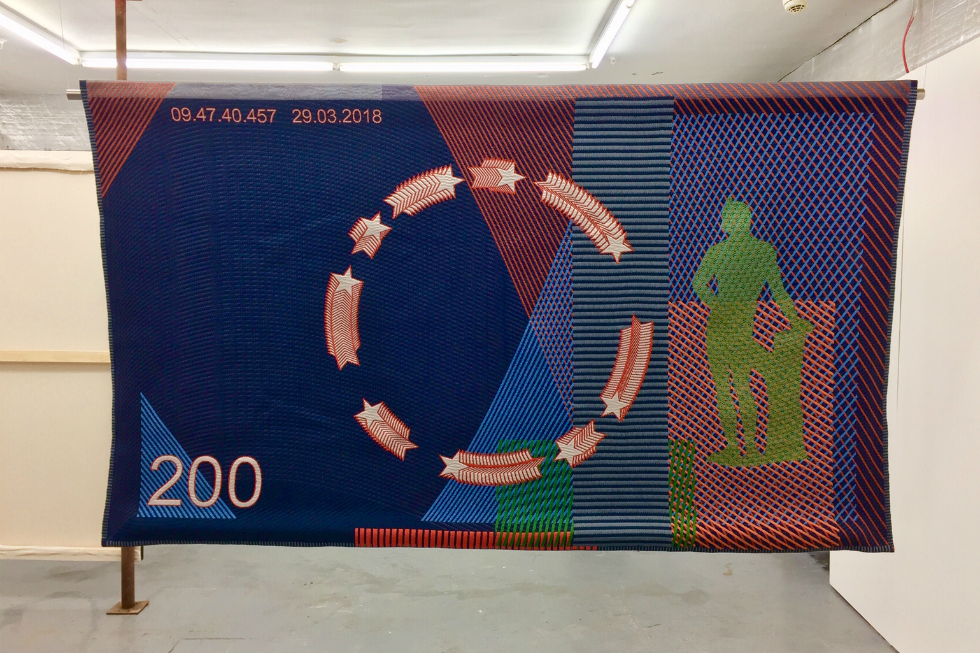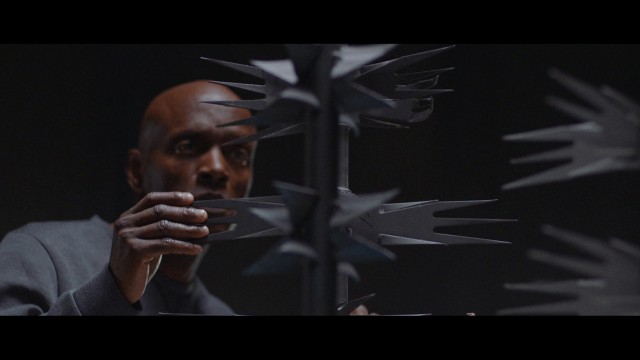“It throws into sharp relief society’s polarisation.” Buffer Zones – Reviewed

Amid the announcement of a new Prime Minister, Vote Leave revelations and Netflix data-mining doc, The Great Hack, for an exhibition at Salford’s Paradise Works, timely isn’t the word…
Cambridge Analytica, the Windrush scandal, Trump’s wall and his threatened/promised impeachment; perceived media bias and Boris’s ‘top team’ filled with damaged goods Brexiteers, sins overlooked and brought in from the cold to herald the new Rule, Brittania! spirit. As you may have noticed, the world is a dizzying hot mess right now, with lots of angry, confused people about. And, boy, do we like sharing our anger. Five minutes on Twitter turns the average, relatively balanced human being into a seething, gibbering wreck of impotent rage at the state of things. So, what’s to be done? How do we make sense of the current reality served up to us?
In the void of institutional, moral accountability, necessarily, the responsibility falls not to our myopic politicians – bodies fattened, and minds dulled by privilege and power – but to society’s outliers. Culture, with its long history of reflecting civilisation’s ills back at itself, frequently does what the powers that be either won’t or can’t. For art to be considered truly great, perhaps it must do this. One only need think of Pablo Picasso’s Guernica – his 1937 painting of a town in the Basque region of Spain bombed, with Franco’s blessing, by Hitler’s Luftwaffe – for evidence. “Painting,” he said, “is not made to decorate apartments; it is an offensive and defensive instrument of war against the enemy.”
All of which brings me to Buffer Zones; a group exhibition at Salford’s Paradise Works curated by Nat Pitt, it proposes to address some of our most pressing anxieties. Specifically, “the geo-political, social, economic and cultural impacts of borders”. In addition, atop the A4 print off on which you will find the exhibition interpretation, is a quote from Marxist philosopher Henri Lefebvre. It reminds us that: “Space is not a scientific object removed from ideology or politics. It has always been political and strategic. There is an ideology of space. Because space, which seems homogeneous, which appears as a whole in its objectivity, in its pure form, such as we determine it, is a social product.”
These concerns run more-or-less explicitly through the works of the show’s thirteen contemporary artists. Before arriving in the space proper, though, you’re met by the literal border of Hilary Jack’s Little Britain, a garden fence symbolising the divisions wrought across the UK by the EU Referendum. Breaking that metaphorical membrane behind which lurks who knows what, was Salford Councillor for Culture, Leisure and Sport Stephen Coen (Lab), tasked with hammering through the fence to mark the exhibition’s opening. A nice touch, which was complemented by Jack’s other work in the show, a photographic print of her neon sculpture, No Borders (currently on display at Yorkshire Sculpture Park).
Beyond the wall lies a plethora of artworks in a variety of mediums, forming a maze of literal and figurative demarcations. Space, perhaps by design, is at a premium here – no wall, black box screening room or ceiling is left unused. Watch out for brothers Simon and Tom Bloor’s Planning for Play, a spray-painted tangle of materials, beer bottles and more, suggestive of those wretchedly awkward liminal suburban zones that appear neither public nor private. Signs and symbols abound, which the visitor – as alien occupier – must navigate.
For centuries, the most meaningful of all symbols was a nation’s flag, especially when planted elsewhere. Watching the coverage of the recent moon landing anniversary, one couldn’t help but be struck by the towering arrogance of America, as their astronauts erect a flag on the surface of our nearest astronomical neighbour. Appropriately, James Bridle has weaved together narratives of ingenuity, migration and exploration for his video installation, A Flag For No Nations. Using a NASA insulation blanket, similar to those given to migrants fleeing war, persecution and famine, Bridle’s plain flag is without stars and stripes, St. George’s Cross or any other denotation of power. Flying on a rocky outcrop at Ellinikón, Greece, it speaks of and for the world’s disenfranchised, unheralded pioneers who, having reached their destinations, find themselves unwanted.

The differences between the haves and have nots could hardly be starker, and Marco Godoy’s The Distance Between Us explores the construction of real and imagined borders. Musing on the thickness of barbed wire, passports and invisible boundaries, and whether we can similarly measure their social impact, his protagonist points out sadly that: “We are a we that creates distances between ourselves.” Nearby and chiming nicely with Godoy’s work is Larry Achiampong and David Blandy’s Finding Fanon Part Two, in which the pair appear via avatars in the sprawling virtual world of Grand Theft Auto 5. The second of a trilogy of films named for philosopher Frantz Fanon, the work examines the politics of race and racism through the prism of post-colonialism: “There are so many unmarked boundaries…” observes the narrator, “how can they tell what is forbidden.” Combining slickly produced visuals and carefully thought out, eloquent spoken meditations on inequality, Godoy and Achiampong & Blandy’s works are among the most powerful, effective and affecting included in the exhibition.
Others are less nuanced, more immediate. Covering the end wall, Gavin Wade’s somewhat glib Europa and The Bull (After Trewin Copplestone), is infused with the conceit of David Cameron’s calling of the 2016 EU Referendum, one whose lack of foresight largely precipitated our current state of affairs. Good job, Dave. Another artist responding to the Euro-fiasco is Yelena Popova, whose impressive tapestry, This Certifies That, employs the stars of the EU member states in a blurred circle at its centre. Is it a case of what goes around comes around? Or, is it more ouroboros? We’re likely screwed either way, but it is through works such as Popova’s that the exhibition throws into sharp relief society’s present state of polarisation – like Lefebvre’s ‘space’, it too is political and strategic, a product.
Or, if certain sources are to be believed, more nefarious social experiment. Via the Cambridge Analytica scandal – in which allegations were made that the company, by enabling the placement of targeted news on social media platforms such as Facebook, swayed elections (often in the favour of far-right concerns) – the exhibition leads one to the permeable borders of the virtual world. Who might be transgressing them and to what end? More tough questions. One suspects that the responsibility for addressing them, ultimately, will be left to artists. And, in a way, I’m ok with that. It’s always been art’s job to interrogate, to provoke and to speak truth to power. It’s our role as the audience to pay attention and act accordingly.
Mike Pinnington
Buffer Zones continues at Paradise Works, Salford, until 3 August (12-5pm, or by appointment)
Images and media, from top: Yelena Popova, This Certifies That and Opening of Buffer Zones © Paradise Works; Marco Godoy, The Distance Between Us (film still) © the artist





